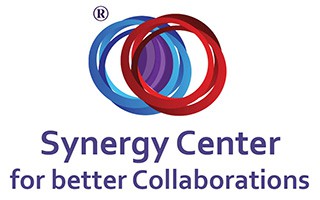Seven forms of interactions exist in an organization at a given moment, and they can be quality, neutral or destructive. Quality interactions promote synergy to a variable degree but destructive interactions discourage synergy. Neutral interactions neither promote nor discourage synergy – but as long as they remain, there’s a real possibility that they’d develop into destructive interactions. Hence, their existence doesn’t serve the organization any good, and so it’s important that you are able to identify them during interactions.
Organizational structure or operating conditions partly determine neutral forms of interactions. In addition, when various interactions coexist, what results determines neutral forms of interactions. They’re not necessarily harmless; in fact, they can disrupt organizational operations, and worsen disagreements.
Let’s take a look at how the various types of neutral forms of interactions affect synergy in an organization.
Hierarchical Interaction Forms
It’s common to find a hierarchical structure, especially in large organizations. Hierarchy allows managers to communicate with subordinates in situations where the opinions or views of the subordinates don’t matter. It’s used in contexts where dialogue isn’t necessary. It’s one of the ways organizations use to ensure that employees follow bureaucratic rules, regulations or procedures.
This isn’t to say organizations don’t give employees a democratic chance to express their views concerning changing the bureaucracy. It can be amended, but, once in place, every employee would have to comply with them (procedure, regulations or rules). Let’s take a look at the following example by Dr. Rami Ben-Yshai in his book Organizational Synergy: A Practical Guide – Recalibrate Interactions to Achieve Peak Engagement, Productivity & Profit.
A Case of Service in a Military Organization
During his time serving the nation in the military, Ben-Yshai was involved in bringing about change in the weapons development procedure. The latter was a “top-down” way the management of the organization communicated with officers of lower rank with Chief of Staff at the topmost hierarchical level.
And because he was directly involved in the revision of the procedure, Ben-Yshai’s passion for synergistic processes and quality communication drove him to dialogue with various field units, collecting their views or perspectives, which would inform the amendment.
And because he incorporated their views or sentiments in creating the draft, the new procedure was widely acclaimed and adopted. It was something unprecedented, because the field units adopted it before it came into effect. This shows a high degree of internalization of the procedure, making adoption much easier. A new reality – a shared language – was successfully created, making boundaries clearer.
Null Interaction Forms
It’s possible for organizational parties – units, individuals, departments, etc. – to have no connection between them. This could be a result of the nature of work processes, which don’t require the parties to connect. In such a case, there’s no effect on synergy – it’s a neutral circumstance. However, if the situation demands that units or individuals connect, and there’s no interaction, then it can affect synergy negatively, especially if either or both parties have developed a feeling of “disconnectedness”.
Take the case of online employees of a global organizations working at different time zones. In such a case, there’s no interaction between them, because different working hours disconnect them – naturally. Feelings of disconnectedness may not be apparent; hence, may not pose problems to synergy. A feeling of disconnectedness can be real if there’s no interaction or communication among physical team members who often see each other face to face. In fact, a sense of invasion can also develop.
The above example that all forms of interactions – just as boundaries – exist at the same time at any given instance. Absence of a member can bring out what the team has been taking for granted – connectedness and quality interactions.
In addition, just as the degree to which an employee or manager perceives the clarity of a boundary is subjective, so is the degree of disconnectedness. The sense of the latter can vary significantly between team members. And just as a feeling of disconnectedness develops to a variable degree, so is a sense (or sensation) of invasion.
This is evident when one or more team member is absent, and others begin to feel that the absentee is neglecting their duty; hence, place additional burden on others. Others can view this as an invasion of their workspace, viewing it as a threat to carrying out their respective (assigned) tasks effectively. One’s personality and how they relate to the absentee inform the difference in reactions.
To Conclude…
Neutral forms of interactions don’t promote synergy, but, depending on work processes or the necessity to connect, they can transform into destructive forms. This transformation depends on the development of feelings of disconnectedness or invasion, perhaps because a team member went ‘silent’ or abdicated their duties. However, for matters that beyond someone’s control, such as time zones, the sensation of disconnectedness or invasion may not be apparent.


